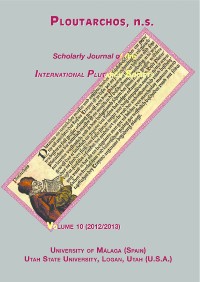Please use this identifier to cite or link to this item:
https://hdl.handle.net/10316.2/36351| DC Field | Value | Language |
|---|---|---|
| dc.contributor.author | Martins, Ana Isabel Correia | - |
| dc.date.accessioned | 2015-04-10T13:47:48Z | |
| dc.date.accessioned | 2020-10-04T22:27:32Z | - |
| dc.date.available | 2015-04-10T13:47:48Z | |
| dc.date.available | 2020-10-04T22:27:32Z | - |
| dc.date.issued | 2013 | - |
| dc.identifier.issn | 0258-655X | - |
| dc.identifier.uri | https://hdl.handle.net/10316.2/36351 | - |
| dc.description.abstract | The European Humanism of Renaissance elected multiplex imitatio as philological method in its encyclopedic productions, based on aemulatio of exempla auctorum, through the assimilation of their precepts and graeco-latins fundamenta. The epistemic and ideological framework of Classical Antiquity, converted in a uox universalis, has promoted the ars combinatoria of humanist writings. The Queronean author was one of the most spread and assimilated authors in this period what is justified by his perennial legacy at the service of moral pedagogy. The Plutarch’s ideal of education, as a source of virtue, is a driving force to literary genesis and creation, deeply rooted in the trends of the Renaissance. In this way, Fray Louis of Grenade was engaged in a proto-mechanism of intertextuality by the revitalization and revalidation of Plutarch’s matrixes. The Dominican collected several apophthegmata, from Moralia, in II tomus of his Collectanea Moralis Philosophiae, which is divided in two parts: prima classis in qua ponuntur tituli ad diuersa genera statuum et personarum spectantes; secunda classis, quae communia virtutum et vitiorum loca complectitur. The genus sententiarum, flourished in order to satisfy pedagogical and philological intents and also for the moral education of ethos. The Dominican invokes Virgil’s image - the exemplum of the bees that gather pollen - as an argument to defend the methodology: to separate and classify all that was accumulated, from the most important and relevant lessons and then (re) organize and distribute it in common places. This process of variatio ac renouatio converts the collector into auctor. So, this present article sheds light on the structure of Collectanea, regards the reception of Moralia, justifies the presence and the role of Plutarch, analyses the dialectic nature of topoi, under the scrutiny of (Neo)stoic philosophy. | eng |
| dc.language.iso | por | - |
| dc.publisher | International Plutarch Society | - |
| dc.subject | Reception of Moralia | eng |
| dc.subject | Collectanea Moralis Philosophiae | eng |
| dc.subject | Neostoicism | eng |
| dc.subject | Ars colligendi | eng |
| dc.subject | Genus sententiarum | eng |
| dc.title | A Recepção dos Moralia na Pedagogia Renacentista e a Filosofia Estóica de Plutarco na Collectanea Moralis Philosophiae de Frei Luís de Granada | por |
| dc.type | article | - |
| uc.publication.collection | Ploutarchos vol 10 | - |
| uc.publication.firstPage | 25 | - |
| uc.publication.lastPage | 62 | - |
| uc.publication.location | Málaga | - |
| uc.publication.location | Utah | - |
| uc.publication.journalTitle | Ploutarchos | - |
| uc.publication.volume | 10 | por |
| dc.identifier.doi | 10.14195/0258-655X_10_3 | - |
| uc.publication.section | Articles | - |
| uc.publication.orderno | 3 | - |
| uc.publication.area | Artes e Humanidades | - |
| uc.publication.manifest | https://dl.uc.pt/json/iiif/10316.2/36351/268452/manifest?manifest=/json/iiif/10316.2/36351/268452/manifest | - |
| uc.publication.thumbnail | https://dl.uc.pt/retrieve/12139308 | - |
| item.fulltext | With Fulltext | - |
| item.grantfulltext | open | - |
| Appears in Collections: | Ploutarchos | |
Files in This Item:
| File | Description | Size | Format | |
|---|---|---|---|---|
| a_recep__o_dos_moralia_na_pedagogia_renascentista.pdf | 1.7 MB | Adobe PDF |  |
Items in DSpace are protected by copyright, with all rights reserved, unless otherwise indicated.
